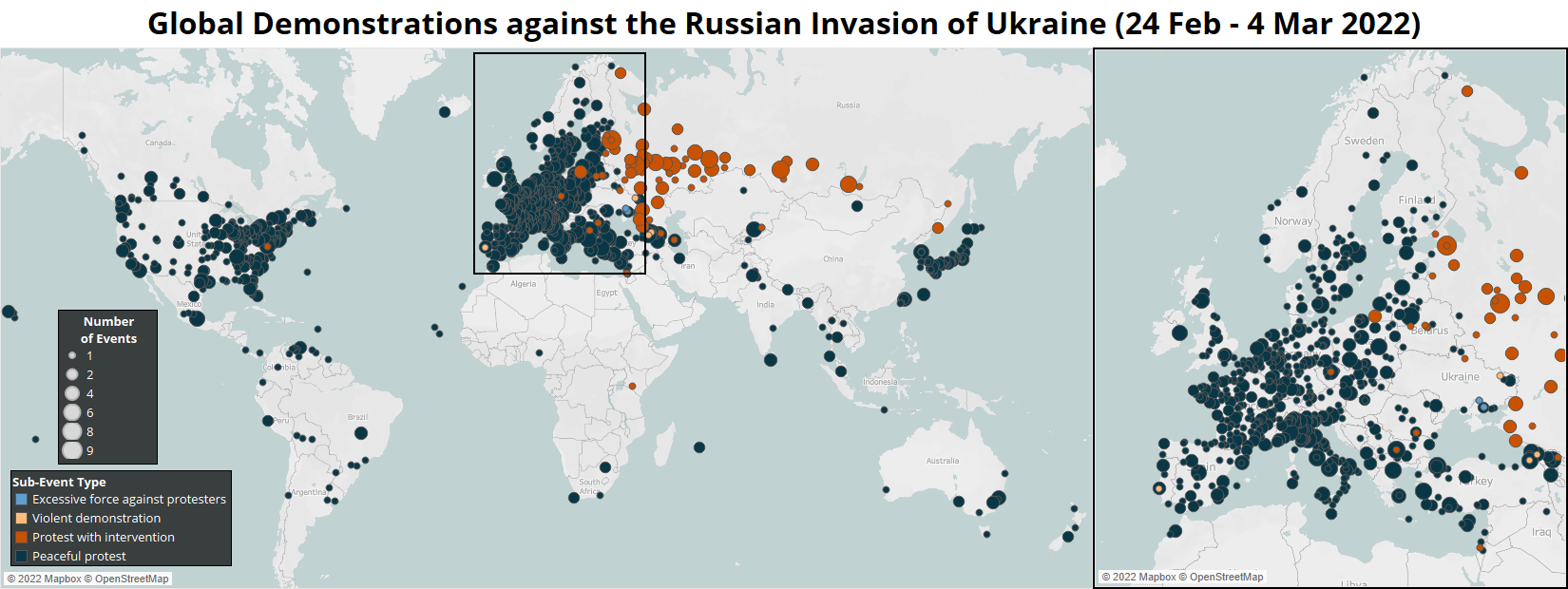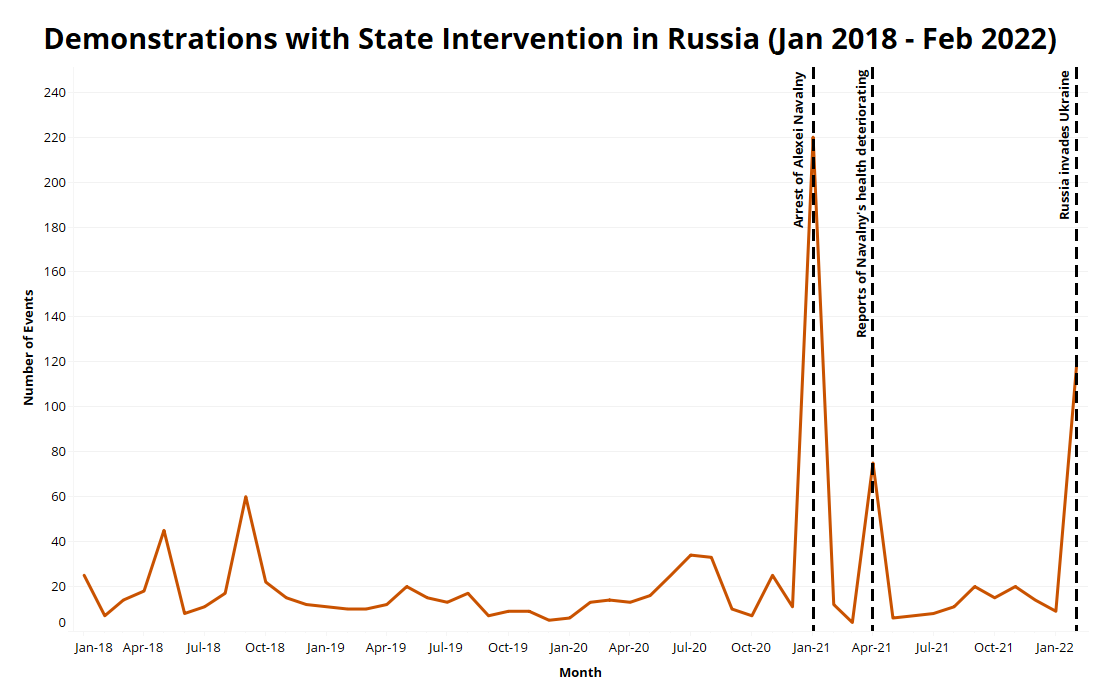Key Trends
- Between the beginning of the Russian invasion on 24 February and 4 March, ACLED records over 1,800 demonstrations against the war and in solidarity with Ukraine worldwide.
- Demonstrations were reported in at least 93 countries and territories, with 99% taking place outside of Ukraine.
- At least 150 demonstrations were held in Russia, 95% of which were met with state intervention, including a large number of arrests and some reports of beatings. Russia accounts for 88% of all anti-war demonstrations that were met with state intervention globally.
Overview
Following the Russian invasion, a wave of demonstrations in solidarity with Ukraine spread around the world. Between 24 February and 4 March, ACLED records more than 1,800 demonstrations in support of Ukraine and against Russian aggression globally. During this time, demonstrations were reported across at least 93 countries and territories (see map below). Nearly all of these demonstrations — over 99% — were peaceful (i.e. protesters engaged in neither violence nor destructive activity).

The state response in Russia is the second most significant crackdown on demonstration activity in the country since ACLED coverage began in 2018, eclipsed only by the level of state intervention in demonstrations responding to the arrest of prominent dissident Alexei Navalny in January 2021 (see line graph below).

A US-based 501(c)(3) non-profit organization established in 2014, ACLED is the highest quality and most widely used real-time data and analysis source on political violence and demonstrations around the world.
If you would like to use ACLED data and analysis, please review our Terms of Use & Attribution Policy. For more information about ACLED methodology, please check our Resource Library.
For media inquiries, please contact: Sam Jones, ACLED Head of Communications




